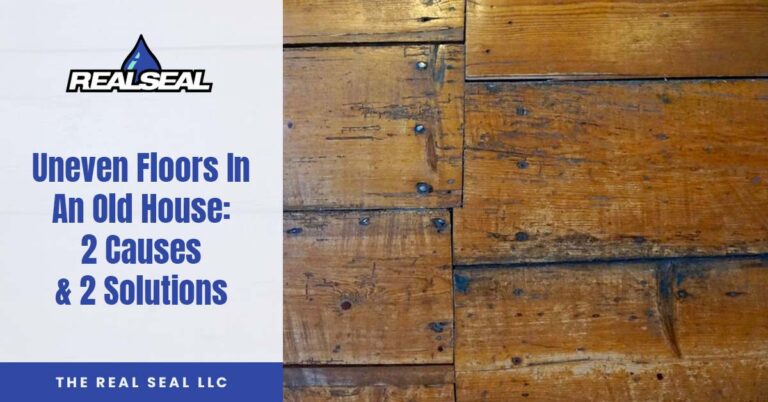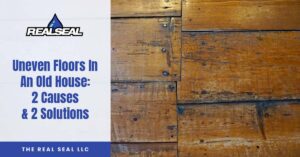If you’re researching “uneven floors in an old house,” chances are you’ve just purchased an older home and want to know why you’re tripping all the time. If you’re unsure if your floors are uneven, place a ball on the ground and see if it rolls by itself. In this article, we discuss two different reasons why older homes have uneven floors and how to solve each one.
Uneven Floors In An Old House
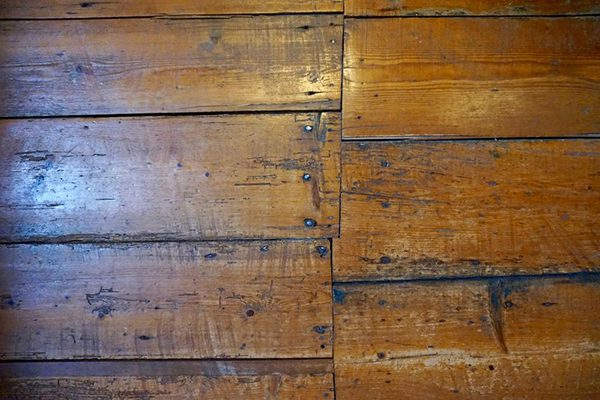
Cause 1: Moisture
Excess moisture is one of the most common causes of uneven floors. If your basement or crawl space is experiencing an influx of moisture, the water molecules could absorb into your floors, leading to warping. This is most prevalent in older homes with hardwood floors since water severely affects wood. Here are a few places that experience water seepage, leading to a rise in moisture.
- Where your foundation wall meets your ground floor – This is called over-the-top seepage and occurs when water builds up around your foundation.
- Where your foundation wall meets your basement floor – This area is called a cove joint, and it exists because your foundation walls and floors were poured separately during construction, leaving this space behind.
- Egress windows – If your basement windows are not properly sealed during installation, water can seep through any open gaps. This can also happen if water builds up inside your window well and you don’t have a drainage system installed.
- Honeycombing/rock pockets – Honeycombing is when water seeps through deteriorated pockets of concrete in your walls or floors. This occurs if the concrete in your walls is improperly mixed or compacted.
- Foundation cracks – No matter the size, foundation cracks can allow water to seep into your basement or crawl space.
- Pipe penetration – When plumbers install pipes in your basement or crawl space, they have to drill through your concrete walls. Once they install the pipes, they must fill the gaps left behind, usually with hydraulic cement. This cement will break down over time, allowing water to seep into your foundation.
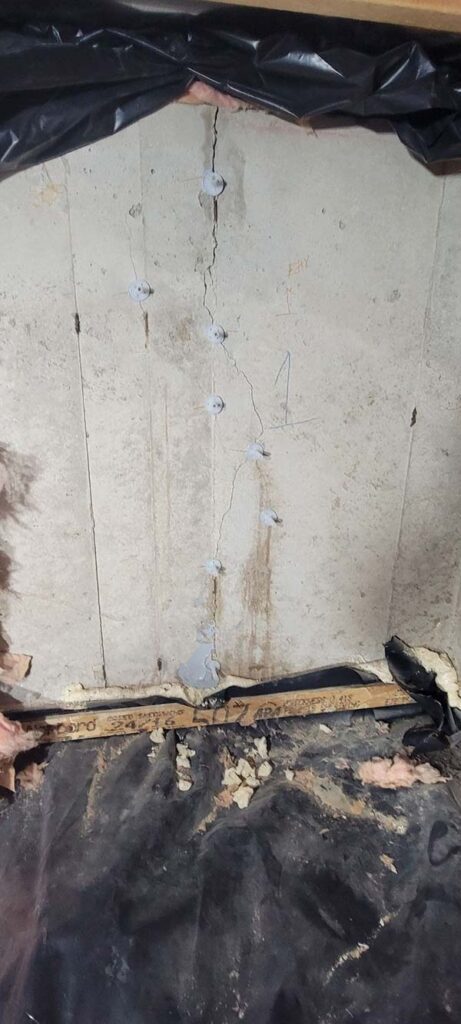
Solution 1: Foundation Waterproofing
If you have uneven floors in your home caused by moisture damage, chances are you’ll need to replace them if they’ve become moldy or warped. Once you’ve made the repairs, you can now focus on waterproofing your foundation. When you call a foundation waterproofing expert, they’ll come up with unique solutions for different water seepage issues.
- Over-the-top, cove joint, and window well seepage – To stop water from building up outside or underneath your foundation, experts will install a series of perforated pipes that will collect excess groundwater. This is called a drain tile system, and it can be installed outside near your footer or inside your foundation at the base of your wall. For window wells, experts will install a drain pipe at the base of the well that also connects to the drain tile system, preventing water from pooling.
- Honeycombing and cracks – Professionals will use a 2-part epoxy injection to fill in any cracks or rock pockets on your concrete walls. This will seal the openings and prevent further water seepage.
- Pipe penetration – To prevent water from leaking through exposed gaps around pipes, experts will inject the area with a unique polyurethane epoxy product that will expand and seal the opening. This watertight solution seals the area and still allows for some pipe movement.
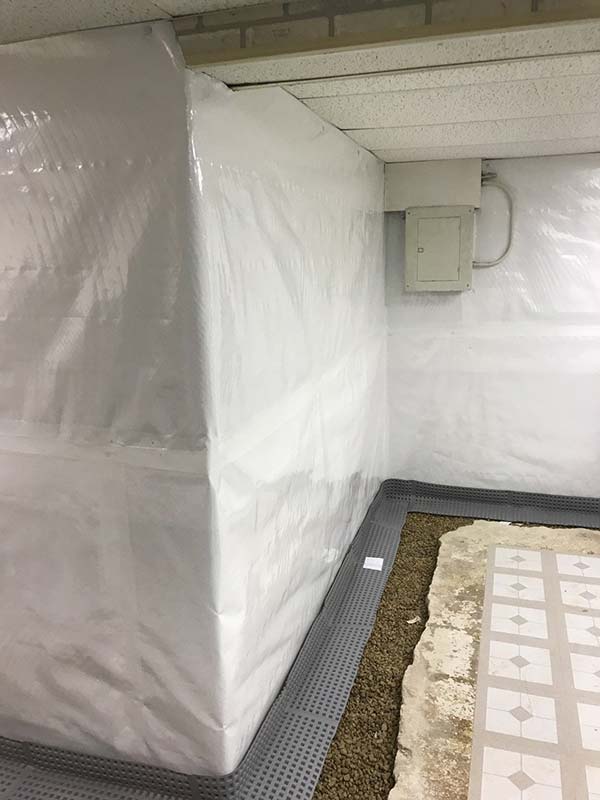
- Vapor barriers and sump pumps – In most cases, foundation waterproofing experts will install a vapor barrier and a sump pump inside your foundation. The vapor barrier is a plastic-like sheet material that’s wrapped around your walls (and crawl space floors). This sheet prevents water from seeping through your concrete, catching and channeling moisture to the drain tile below. The sump pump is a fixture that sits inside a pit in your floor and ejects the collected water from your drain tile away from your foundation. Both of these solutions, combined with a drain tile system, create an effective and lasting dry foundation.
Cause 2: Foundation Settlement
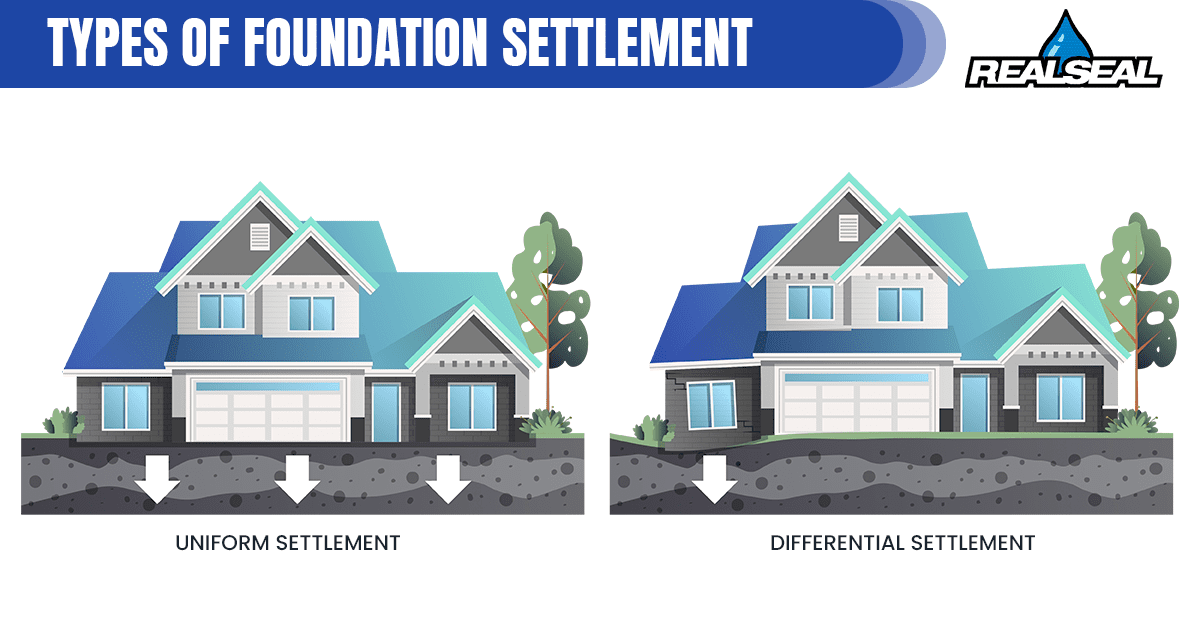
Solution 2: Foundation Repair Using Underpinning
Settling foundations can be lifted, leveled, and stabilized using underpinning. Underpinning is when experts install long steel piers underneath your home until they find load-bearing strata (strong enough soil to hold up your foundation). There are two types of underpinning methods: push and helical piers. Push piers are pushed deep below your soil, while helical piers are twisted like corkscrews.
Both underpinning methods are able to reach deep below the weak soil near your foundation until they reach the load-bearing strata. These repair methods will lift and return your home back to its structural alignment or the maximum practical level. MPL is the ultimate amount of lift achievable before any further movement damages your home.
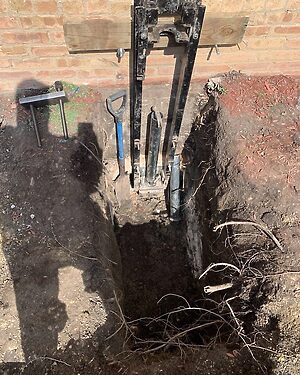
Who Can Help?
If you have uneven floors in an old house, call The Real Seal. The solutions we talked about above are not DIY methods. Our team of experts are trained in both foundation waterproofing and foundation repair. We’ve been serving the Chicagoland area since 2011, providing the best services in the industry. Call today for your free inspection and quote.
